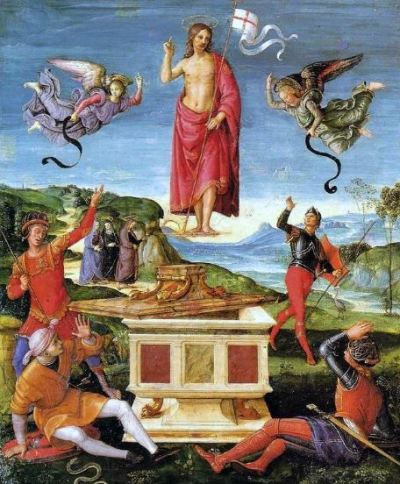How do we know Jesus is the son of God?

My favorite Christmas card pictures Genghis Khan, Hitler, Napoleon, and other monarchs and tyrants beneath the words, “History is filled with men who would be gods.”
Inside the card, next to a depiction of Christ in his manger, it adds, “But only one God who would be man.”
Is there evidence that the Christ of Christmas is really the divine Son of God?
The Bible says that he is, of course.
According to the New Testament, Jesus walked on water and calmed stormy seas, healed the sick and raised the dead. But all religions have their holy books. Just because they believe something doesn’t make it true.
Here’s why I’m convinced that Jesus Christ was and is the Son of God. It all hinges on an event Christians call the “resurrection.”
How can we believe those who first experienced Jesus’ resurrection?
We know from ancient historians Tacitus and Thallus the Samaritan that Jesus was crucified by Pontius Pilate. According to Josephus, the first-century Jewish historian, the first Christians believed that he rose from the dead on Easter Sunday morning.
How can we know if they were right?
David Hume was an eighteenth-century Scottish philosopher, known today as the “Father of Skepticism.” In An Enquiry Concerning Human Understanding, he set out six criteria by which we should judge those who claim to have witnessed a miracle. They should be:
- numerous
- intelligent
- educated
- of unquestioned integrity
- willing to undergo severe loss if proven wrong
- and their claims should be easily provable.
I think his standards are an excellent way to judge those who say they witnessed a miracle.
How do the eyewitnesses of the risen Christ fare by these criteria?
- They were numerous: over five hundred saw the resurrected Lord (1 Corinthians 15:6).
- They were intelligent: the literature they produced is the most-published book in history.
- They were well-educated: Paul was trained by Gamaliel, the finest scholar in Judaism (Acts 22:3).
- They were men and women of unquestioned integrity.
- They were clearly willing to undergo severe loss, as proven by their willingness to die for the Christ they proclaimed.
- And their claims were easily validated, as Jesus’ empty tomb was available to anyone who wanted to visit it (cf. Acts 26:26, “this thing was not done in a corner”).
So the witnesses were credible. What about the resurrection they proclaimed?
How can we believe the resurrection truly happened?
As we have seen, it is a fact of history that Jesus of Nazareth was crucified and buried, and that on the third day his tomb was found empty. Ever since, skeptics have struggled to explain that empty tomb and the changed lives of his followers.
One theory is that the disciples stole the body while the guards slept (Matthew 28:11-15).
This was the earliest explanation for Easter. But how would sleeping guards know the identity of these thieves? How could the disciples convince five hundred people that the corpse was alive? And why would the disciples then die for what they knew to be a lie?
A second theory claims that the women stole the body.
How would they overpower the guards? How would they make a corpse look alive? Why would they suffer and die for such a lie?
A third explanation is that the authorities stole the body.
When the misguided disciples found an empty tomb, they announced a risen Lord. But why would the authorities steal the body they had stationed guards to watch? And when the Christians began preaching the resurrection, wouldn’t they quickly produce the corpse?
A fourth approach is the wrong tomb theory.
The grief-stricken women and apostles went to the wrong tomb, found it empty, and began announcing the resurrection. But the women saw where he was buried (Matthew 27:61); Joseph of Arimathea, the man who owned the tomb, would have corrected the error (Matthew 27:57–61); and the authorities would have gone to the correct tomb and produced the corpse.
A fifth strategy is the “swoon theory.”
Jesus did not actually die on the cross. He or his followers bribed the medical examiner to pronounce him dead, then he revived in the tomb and appeared to be resurrected.
But how could he survive burial clothes which would have suffocated him? How did he shove aside the stone in his emaciated condition and overpower the guards? How could he appear through walls (John 20:19, 26) and ascend to heaven (Acts 1:9)?
The truth of the resurrection
There is only one reasonable explanation for the empty tomb, the changed lives of the disciples, and the explosion of Christianity around the world: Jesus Christ rose from the dead.
He is therefore the person he claimed to be: the divine Son of God.
Jesus came at Christmas to forgive our sins and give us eternal life as the children of God. But all gifts must be opened. Open yours today: ask Jesus to forgive your mistakes and become your Lord and King. Then tell a Christian what you’ve done.
Jesus really is the God who would be man.
At Christmas, he became one of us that we might be one with him. Trusting him is not a leap into the dark, but into the light. When you jump, crucified hands will catch you and never let you go (John 10:28).
Originally posted at Denison Forum.





















